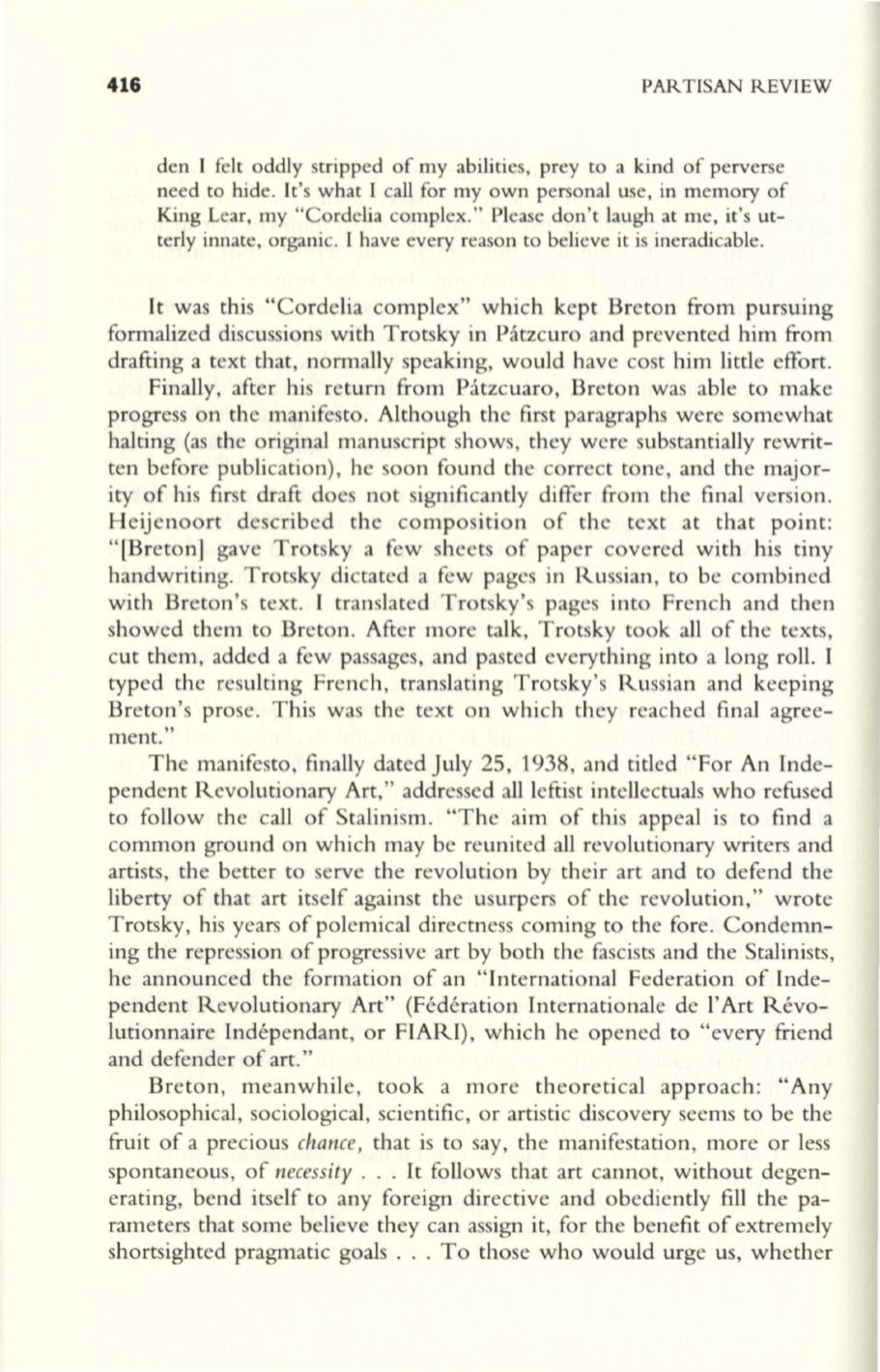
416
PARTISAN REVIEW
den I felt oddly stripped of my abilities, prey to a kind of perverse
need to hide. It's what I call for my own personal use, in memory of
King Lear, my "Cordelia complex." Please don't laugh at me, it's ut–
terly innate, organic. I have every reason to believe it is ineraclicable.
It
was this "Cordelia complex" which kept Breton from pursuing
formalized discussions with Trotsky in Pitzcuro and prevented him from
drafting a text that, normally speaking, would have cost him little effort.
Finally, after his return from Pitzcuaro, Breton was able to make
progress on the manifesto. Although the first paragraphs were somewhat
halting (as the original manuscript shows, they were substantially rewrit–
ten before publication), he soon found the correct tone, and the major–
ity of his first draft does not significantly differ from the final version.
Heijenoort described the composition of the text at that point:
"[Breton] gave Trotsky a few sheets of paper covered with his tiny
handwriting. Trotsky dictated a few pages in Russian, to be combined
with Breton's text. I translated Trotsky's pages into French and then
showed them to Breton. After more talk, Trotsky took all of the texts,
cut them, added a few passages, and pasted everything into a long roll. I
typed the resulting French, translating Trotsky's Russian and keeping
Breton's prose. This was the text on which they reached final agree–
ment."
The manifesto, finally dated July 25, 1938, and titled "For An Inde–
pendent Revolutionary Art," addressed
all
leftist intellectuals who refused
to follow the call of Stalinism. "The aim of this appeal is to find a
common ground on which may be reunited
all
revolutionary writers and
artists, the better to serve the revolution by their art and to defend the
liberty of that art itself against the usurpers of the revolution," wrote
Trotsky, his years of polemical directness coming to the fore. Condemn–
ing the repression of progressive art by both the fascists and the Stalinists,
he announced the formation of an "International Federation of Inde–
pendent Revolutionary Art" (Federation Internationale de l' Art Revo–
lutionnaire Independant, or FIARI), which he opened to "every friend
and defender of art."
Breton, meanwhile, took a more theoretical approach: "Any
philosophical, sociological, scientific, or artistic discovery seems to be the
fruit of a precious
chance,
that is to say, the manifestation, more or less
spontaneous, of
necessity .
..
It follows that art cannot, without degen–
erating, bend itself to any foreign directive and obediently fill the pa–
rameters that some believe they can assign it, for the benefit of extremely
shortsighted pragmatic goals ... To those who would urge us, whether


